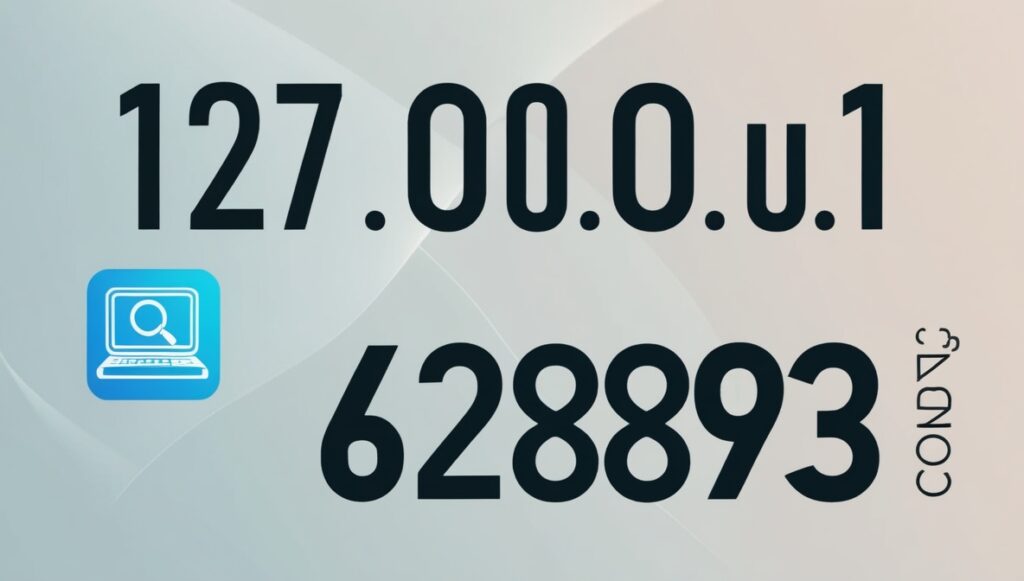The address 127.0.0.1:62893 often appears in networking and server configurations, particularly during development or testing phases. Grasping what this address addresses, its advantages, and how to determine normal blunders can assist with smoothing out your work process.
What is 127.0.0.1:62893?
127.0.0.1 is the loopback address, by and large, suggested as localhost and is used to test or connect with organizations on the local machine. The port number, 62893, is only one of many ports utilized for various applications or administrations. At the point when consolidated, 127.0.0.1:62893 means that a help or server is running on the neighbourhood machine and is open through this port. Developers often encounter this address when running local servers or debugging software.
Benefits of 127.0.0.1:62893
Using 127.0.0.1:62893 offers a few benefits:
- Nearby Advancement Climate: It permits designers to host and test applications on their machines without influencing live conditions.
- Expanded Security: Since 127.0.0.1 just tunes in for associations from the nearby machine, it limits openness to outside dangers.
- Network Disengagement: Running administrations locally guarantees that outer organizations and clients can’t slow down the improvement interaction, giving a controlled climate to testing.
How 127.0.0.1:62893 Works

Exactly when you run assistance, for instance, a web server or application, it tunes in for moving toward a relationship on a specific port. For this situation, port 62893. Since 127.0.0.1 is a loopback address, any help running on this IP is just open from the nearby machine. This is helpful for improvement, troubleshooting, or design prior to moving to a creation climate.
By restricting administrations to 127.0.0.1, designers guarantee they can get to these administrations locally without making them accessible to outer machines. At the point when a client or program attempts to interface with 127.0.0.1:62893, the framework courses the solicitation inside.
Is it Safe to Expose Port 62893 Publicly?
Uncovering port 62893, or any port connected to 127.0.0.1, to general society can be hazardous. Naturally, 127.0.0.1 permits neighbourhood access, meaning no outer traffic can arrive at it. In any case, on the off chance that this port is presented freely because of a misconfiguration, it could open up weaknesses.
Leaving ports open to public organizations might prompt unapproved access, animal power assaults, or double-dealing of unpatched programming. Continuously guarantee your firewall is arranged to hinder outer admittance to such ports except if totally important.
Disconnected from the target VM, address: 127.0.0.1:62893″ Error Resolution
One normal mistake designers experience is the “Disengaged from the objective VM, address: 127.0.0.1:62893” message. This normally happens while attempting to interface with a nearby help who becomes lethargic or neglects to lay out a steady association.
Causes:
- Service Crashes: The service running on port 62893 might crash, leading to disconnection.
- Configuration Issues: Incorrect settings in your network or firewall could prevent successful communication.
- Port Conflicts: Another service may already be using port 62893, causing conflicts.
Fixing the Error
To fix this error, try the following steps:
- Check assuming the Help is Running: Guarantee the application or administration tuning in on 127.0.0.1:62893 is dynamic and working.
- Restart the Assistance: Restarting the help can frequently determine association issues brought about by brief interruptions.
- Inspect the Arrangement: Twofold actually takes a look at your organization, firewall, and application design to guarantee they are accurately positioned to handle traffic to 127.0.0.1:62893.
- Use a Different Port: If port conflicts arise, assign a different, unused port and update the configuration to reflect the new settings.
- Inspect System Logs: Look at system or application logs for any additional information that may provide clues to the root cause of the disconnection.
Still, Facing Issues?
If the problem persists, consider taking the following actions:
- Check Network Connections: Ensure there are no network issues, such as misconfigured firewalls or restricted access.
- Update Software: Outdated software may contain bugs that lead to connectivity issues. Ensure your service is up to date.
- Consult Documentation: If the service or application has specific documentation, review it for troubleshooting steps.
- Reach Out to Support: If you are unable to resolve the issue, contacting the application or server support team may help identify deeper problems.
Conclusion
127.0.0.1:62893 serves as a crucial address for developers, providing a local environment for testing and debugging services. While generally safe, exposing this port or any port to public networks can invite security risks. Should you encounter issues like the “Disconnected from the target VM” error, following the troubleshooting steps above can help you identify and resolve the problem efficiently. Always be mindful of your port configurations and ensure you’re using them securely.
Read also: Breaking Through the E-Commerce Fog: The Unique Appeal of GoldenGateMax.shop.








3 thoughts on “127.0.0.1:62893 Explained: Common Errors and Fixing Tips”